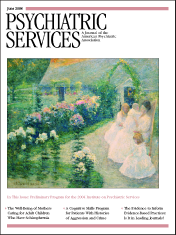As a contribution to the field of gambling research, Mikal Aasved's recent book, The Psychodynamics and Psychology of Gambling: The Gamblers Mind, Volume 1, is laudable for its intent to present a comprehensive look at the motivations for normative and excessive gambling. As such, there is much about this volume that will be useful to academics who are researching gambling psychology. The book presents a wealth of historical knowledge as well as an impressive reference list regarding the psychology of gambling.
The field of gambling research has advanced rapidly in recent years with the sophistication of the research mirroring the complexity of this public health concern. This is an exciting time for gambling research. Psychology, genetics, neurobiology, and treatment have joined forces to address not only gambling but also the universal theme of what gambling represents: conflicting motivations that drive behavior. Given the current stimulating climate of gambling research, I could not help but feel disappointed by this text. Although chapter 6, "Irrational Thinking," provides the necessary amount of detail about cognitive distortions to allow the professional who is unfamiliar with gambling to begin to have an idea of why his or her patients appear unable to stop a behavior that they outwardly acknowledge as a problem, ultimately there is little else in this volume that is useful for the practicing clinician. And although the book was published in 2002, the content fails to account for research after 1998. Although this is somewhat unavoidable given the publishing process, it is an unfortunate failing given the incredible advances in gambling research during the past six years.
These shortcomings result in a volume that is divorced from recent findings of neurobiology, the relationship of biology to behavior and cognition, and advances in treatment, both psychological and psychopharmacological. What is left is a text that presents many unsupported historical ideas of gambling motivation. Although the author presents these ideas with an intelligent and critical eye, he is unable to martial current research as support for a more complex understanding of motivation.
The book alludes to future volumes that may address some of these biological and treatment issues but fails to establish a clear plan of how many volumes are anticipated and what they will address. Without this plan, I could not help but wonder why a book on the psychology of gambling would fail to appreciate the biological and genetic underpinnings of behavior. I also kept wondering about the intended audience for the book. I doubt that practicing health professionals would find much value in it. However, as a resource on early thoughts of gambling, it may be useful for the academic who is involved in gambling research.

